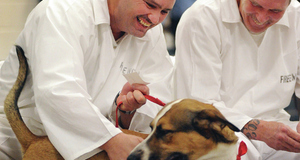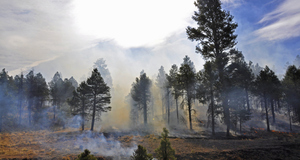The Role of Native American Healing Traditions Within Allopathic Medicine
By
2020, Vol. 12 No. 12 | pg. 1/1 AbstractAlthough spirituality has been an essential part of healing for most of mankind, modern medicine is more likely to embrace a mechanistic view of the human body where illness is an engineering problem and the body is the sum of discrete parts, rather than a complex whole. This may be the accepted norm today, but it is in complete contrast to the Native-American tradition, where the spirit is inextricably linked to healing. Neither approach is wholly sufficient in modern times and Native American (NA) groups have adopted their healing beliefs and practices to work in tandem with allopathic medicine and technology through integration but have also embraced traditional methods as a form of cultural autonomy. Although spirituality has been an essential part of healing for most of mankind, modern medicine has embraced a mechanistic view of the human body where illness is an engineering problem and the body is the sum of discrete parts, rather than a complex whole. This may be the accepted norm today, but it is in complete contrast to the Native-American tradition, where the spirit is inextricably linked to healing. Neither approach is wholly sufficient in modern times and Native American (NA) groups have adopted their healing beliefs and practices to work in tandem with modern medicine and technology through integration but have also embraced traditional methods as a form of cultural autonomy. Whereas modern medicine is mechanistic and individualistic, traditional NA ideas of health and illness are steeped in spirituality.1 Although healing practices vary based on each tribal nation, the four constructs of spirituality are a common thread to most of their cultural belief systems. The Creator, Mother Earth, Father Sky, or the Great Spirit, among other names, refers to the universal spiritual force and is looked to for guidance by both individuals and the community. It is a non-theistic belief in a life force that pervades all creation and can help explain NA’s intimate connection with nature. Since all creation (from plants to rocks to lightning) has spiritual energy, everything is intimately connected and worthy of respect. The other constructs are the community which includes the family and tribe, the environment and nature, and the self. 2 Spirituality is not just a part of life but is life and pervades all aspects of daily living. The mind, body, and spirit are interconnected just as the spiritual world interacts with the physical world. NA healers stress that harmony “will restore balance in all areas of the patient's life: the physical, spiritual, and mental.” 3Disharmony, offending natural forces, violation of taboos, or chance actions are seen as the causes of illness and disturb wellness.4 NA healers, referred to as medicine men/ women or shamans can restore harmony when a taboo has been violated through ritualized ceremonies and special activities such as song and dancing. Herbalists use natural medicines such as tea and herbs to treat various conditions. For example, tea containing juniper bark and needles was used to successfully treat scurvy.5 Traditionally, knowledge about herbs was passed down orally and it was mostly women who collected the herbs as medicine women or the wives of medicine men. In modern times, most NA do not live on reservations but are mostly concentrated in urban areas.6 As opposed to harvesting and preparing herbs directly from nature, new retailers have started businesses online and in-stores that make herbal medicine more accessible. One example is Nuwati Herbals, an online retailer that was started by Rod Jackson who is a Metis (mixed blood) Cherokee and Scots-Irish. On his website, Jackson talks about his “Grandma who would send [him] out, at the age of 5, to gather herbs, bark, roots, flowers, and leaves, from which she would make Medicine. She taught [him] the proper way to gather, so that there would always be plants for future generations. [He] developed a special connection with Nature, and required close contact and frequent encounters with the woods and Mother Earth.” 7 The founders’ background is reflected in the website which extensively uses Native American terms and also has a page where they post Native American traditions and prayer circle requests. The Sweat Lodge Herbal Bath Bag is one of the best-selling products and can be used for the Sweat Lodge Ceremony, one of the most widely recognized forms of NA healing. The Ceremony “honors the process of transformation and healing” and is used for purification.8 Moreover, there are a wide variety of remedy tea blends such as “laughing coyote tea” and others with the common label “Herbal Remedies from Mother Earth” and “Caution: Consult your healthcare professional prior to use if you are pregnant, nursing, take any medication or have a medical condition.” 9 Nuwati Herbals shows how NA’s have adapted for changing environments by embracing technology to disseminate healing. The cautionary note about consulting physicians also shows compliance and a willingness to work with modern medicine. In NA tradition, the Circle is a symbol of relation, peace, and unity. It serves as a reminder that we are intimately connected to all other living things and the Circle of Life is a representation of harmony in all relationships with the self and the environment.10 NA spirituality is circular in nature and it includes the seven directions West, North, East, South, Sky, Earth, and Center. Talking or healing circles consist of participants seated in a circle and is used to discuss a problem or a question. A sacred object, called a talking stick, must be held if a person who would like to speak and is then passed around clockwise. This method gives everyone a chance to speak without interruptions and ensures listening as opposed to immediate responses or debates. These healing circles have been integrated into modern NA practices and are typically held in community centers. The rules of the healing circles have not changed, although the subjects of discussion have been adapted to modern issues. Healing circles, through narrative medicine, restore the patient’s role in the healing process and fill in modern medicine’s gaps; they “provide a cathartic impact of publicly sharing problems or concerns.” 11 While the family doctor may spend ten or fifteen minutes extracting diagnostic data from the patient, healing circles provide the opportunity to share the emotional aspects of illness and healing. In this way, healing circles have been espoused by various studies as they show better patient outcomes when integrated with primary medicine. 12 13 Some examples of current Waccamaw Siouan talking circles are elder circles to share tribal history and healing and youth circles to “promote strong, emotionally healthy native students and individuals who are struggling with drugs, alcohol and everyday conflicts.” 14 Indigenous people have some of the worst health disparities in the United States and this is directly linked to colonization. NA’s are at increased risk of “cancer, heart disease, mental health and suicide, obesity, substance use, diabetes, and hepatitis,” among others.15 The Indian Health Service (IHS) provides health assistance to over 573 federally recognized national tribes and since 70% of NA live in off-reservation areas, the IHS also funds urban Indian health centers that provide “medical services, dental services, community services, alcohol and drug use prevention, education and treatment, HIV and sexually transmitted disease education and prevention services, mental health services, nutrition education and counseling services, pharmacy services, health education, optometry services, social services, and home health care.” 16 Although NA religiosity has thus far been discussed singularly, it is important to note the tremendous diversity within NA groups. There are over 500 federally recognized tribes. The proclivity to grouping all Native Americans under one umbrella term started from the earliest explorers and historians. Even though explorers “noted differences between the native tribes in terms of their physical structure, food habits, skin color, and friendliness,” a simplified stereotypical image facilitated the construction of a “we/ they relationship,” between Europeans and the people of the New World.17 With this in mind, it is important to note the differences in the use of sweat lodges, one of the most common ceremonies, by different groups. Sweat lodges/ baths are “a combination of intense heat exposure with psychotherapy or counseling, ideally incorporating the group process” and NA groups believe this ceremony allows for the cleansing of the mind, body, and spirit which results in harmony and balance.18 However, there are distinct variations between tribes. For example, the hot rock method is used by tribes in the central plains and the southwest, such as the Navajos and Sioux. Logs and heavy bark are used and covered with blankets or skins (temporary lodges) or sealed with mud or sod (permanent lodges). Regardless of the structure, a “depression was dug near the door or in the center to cradle the rocks, which were heated outside and brought in on forked sticks. Steam was produced by sprinkling the rocks from a straw broom or a hollowed buffalo horn.” 19 The symbolism behind the construction of the sweat lodge is also important. For example, the Sioux believe the circular nature of the lodge represents the womb from which all life originates and the steam is a way to visualize the prayers rising to the Creator.20 Other groups, such as the Alaskan Eskimos used a direct fire sweat lodge where the lodges were heated directly by fire. These lodges were typically much larger than the compact lodges of the Sioux and hosted dozens of men. In many tribes, there is a taboo in letting women into the sweat lodge or “mixing sweats,” but not against women conducting their own sweat ceremony with a female leader instead of a medicine man.21 Nearly all tribes are open to allowing non-Natives to experience sweat therapy, but express a fear that the spiritual roots and traditional methods will be ignored, as expressed by this cautionary noted by a Sioux leader: “Sweat lodges are easy to make. You can pray to your own gods and take herbs that heal. But without a medicine man or spiritual leader, it is not an Indian sweat.” 22 Other tribes use sweat therapy, although without the typical sweat lodge, to treat specific areas of the body. For example, the Midewiwns treat rheumatism using steam from boiling medicinal herbs. They place a kettle with water and medicinal herbs in a hole and let the steam seep into the ailing limb wrapped with a blanket. In describing a California sweating ceremony, Stephen Powers writes:
Powers, a historian of Native American tribes in California, traveled extensively to learn about NA groups and wrote notable accounts of them. Although this excerpt was from 1877, not much has changed as people still look towards alternative forms of healing to complement biomedicine. As stated before, most Native Americans currently live in urban areas, off-reservation, but still maintain ties to traditional healing methods. Sweat lodges, an integral part of NA healing, has been adapted to work in tandem with counseling for mental illness. They may “help Native American clients reconcile issues around cultural identity.” 24 Doctors and therapists have been trained to refer to sweat lodges as an addendum to their treatment when the patient prefers a more spiritual or cultural approach to foster harmony. As previously mentioned, the best-selling product on Nuwati’s herbals is The Sweat Lodge Herbal Bath Bag which further elucidates the importance of this ceremony to NA groups. Diabetes and other chronic diseases were non-existent among NA groups 100 years ago, but are rampant today. The rise of diabetes can be tied to the introduction of reservations that limited physical activity and introduced highly processed diets. Many studies have espoused the traditional NA diet (wild game, fruits, root vegetables) and showed that a return to a traditional diet can reverse the effects of metabolic disorders.25 However, different tribes have varying beliefs in the root cause of diabetes. For example, the Navajo believe diabetes is caused by a state of disharmony and is “brought on by outside influences, such as white people.” 26 On the other hand, the Northern Utes believe diabetes “is an entity that takes possession of people to do evil and results from witchcraft or a breach of tribal taboos.” 27 A common theme among tribes is that the illness is brought upon deviance from traditional ways. With respect to diabetes, NA frequently combine traditional NA themes with ideas of prevention that are being increasingly emphasized by biomedicine. For example, The Chinle Service Area, situated in the center of the Navajo Nation, hosts a popular annual event: “Mobilizing to Defeat Diabetes from Four Directions” to raise awareness about diabetes prevention through lifestyle and exercise.28 The event starts off with bikers racing towards Chinle for 20-25 miles. The second part involves horseback riders at 7-10 miles and then runners join in at 5 miles. Walkers start at three miles, then they all meet on Chinle at the Chapter House, which is set up with guest speakers, educational booths, and entertainment. On the surface, this event seems like a variant of a typical triathlon. However, having four different groups converge and the title of the event both represent the medicine wheel or the circle of life, which honors the interconnectedness of all living things. To quote an Oglala Sioux holy man, “See, I fill this sacred pipe with the bark of the red willow; but before we smoke it, you must see how it is made and what it means. These four ribbons hanging here on the stem are the four quarters of the universe...But these four spirits are only one Spirit after all." 29 This quote demonstrates the importance of harmony, but also the sacredness of the number four which can represent the four seasons, human needs, elements, and others depending on the tribe. For Navajos, it is intimately connected to their ancestral homeland which is in between four sacred mountains in each direction. The Waccamaw Siouan tribe used talking and drum circles to combat drugs, violence, and diabetes, as discussed previously. The Drum circles, like the talking circle, are a way to give back to the circle of life, foster a sense of community, and honor “eternity and the immortality of life,” as explained by Rusty Cozad, a Kiowa member.30 In regards to diabetes, talking circles are used to “teach culture and traditions for health education and promotion.” 31 The Navajo Nation Special Diabetes Project includes a Walk In Beauty program which includes running, biking, and walking. The phrase “walking in beauty,” refers to when one lives life in harmony with the elements of the four cardinal directions. The website also outlines Navajo food pyramids and traditional recipes.32 The examples above illustrate the subtle differences between tribes but also highlight the universality of the belief that harmony with oneself and nature can combat disease and illness. Overall, NA groups have been able to retain ceremonies, herbal remedies, and traditional beliefs despite the monopoly of biomedicine. Integration allows NA groups to stay connected to their roots and to rescue their culture that has been subject to a history of oppression and abuse. Research has proven that “urban native American youth who follow American Indian traditional spiritual beliefs are less likely to use drugs and alcohol.” 33 In this way, integration is a potential target to combat the health disparities in Native Americans and is also a way of preserving traditional methods in an ever-changing society. ReferencesAaland, Mikkel. Sweat: Illustrated History and Description of the Finnish Sauna, Russian Bania, Islamic Hammam, Japanese Mushi-buro, Mexican Temescal and American Indian & Eskimo Sweat Lodge. Capra Press, 1978. "Absentee Shawnee Tribal Health System." Absentee Shawnee Tribal Health System. https://www.asthealth.org/. American Sociological Association (ASA). "Native American spiritual beliefs influential in spurring youth to avoid drugs and alcohol." ScienceDaily. www.sciencedaily.com/releases/2012/08/120820110807.htm (accessed December 11, 2019). An Ethnologic Dictionary of the Navaho Language. Saint Michaels, AZ: Franciscan Fathers, 1910. Bassett, Deborah. "“Our Culture Is Medicine”: Perspectives of Native Healers on Posttrauma Recovery Among American Indian and Alaska Native Patients." The Permanente Journal 16, no. 1 (2012). doi:10.7812/tpp/11-123. Bozof, R. P. "Some Navaho Attitudes toward Available Medical Care." American Journal of Public Health 62, no. 12 (1972): 1620-624. doi:10.2105/ajph.62.12.1620. Csordas, Thomas J. "The Navajo Healing Project." Medical Anthropology Quarterly 14, no. 4 (2000): 463-75. http://www.jstor.org/stable/649716. Davies, Wade. Healing Ways: Navajo Health Care in the Twentieth Century. University of New Mexico Press, 2009. Durzan, Don J. "Arginine, Scurvy and Cartier's "tree of Life"." Journal of Ethnobiology and Ethnomedicine5, no. 1 (2009). doi:10.1186/1746-4269-5-5. Elk, Black, and John G. Neihardt. Black Elk Speaks; Being the Life Story of a Holy Man of the Oglala Sioux. Lincoln: University of Nebraska Press, 1961. Garrett, Michael Tlanusta, Edil Torres-Rivera, Michael Brubaker, Tarrell Awe Agahe Portman, Dale Brotherton, Cirecie West-Olatunji, William Conwill, and Lisa Grayshield. "Crying for a Vision: The Native American Sweat Lodge Ceremony as Therapeutic Intervention." Journal of Counseling & Development 89, no. 3 (2011): 318-25. doi:10.1002/j.1556-6678.2011.tb00096.x. Gill, Sam D. Native American Religions an Introduction. Wadsworth/Thomson Learning, 2005. Johnston, S. L. "Native American Traditional and Alternative Medicine." The ANNALS of the American Academy of Political and Social Science 583, no. 1 (2002): 195-213. doi:10.1177/0002716202583001013. Lesson for Providers. https://www.nec.navajo-nsn.gov/Research/Lesson-for-Providers. Mclaughlin, S. "Traditions and Diabetes Prevention: A Healthy Path for Native Americans." Diabetes Spectrum 23, no. 4 (2010): 272-77. doi:10.2337/diaspect.23.4.272. Madrona, Lewis. "Introducing Healing Circles and Talking Circles into Primary Care." The Permanente Journal 18, no. 2 (2014): 4-9. doi:10.7812/tpp/13-104. Mehl-Madrona, Lewis. Narrative medicine: The use of history and story in the healing process. Simon and Schuster, 2007. Moghaddam, Jacquelene F., Sandra L. Momper, and Timothy W. Fong. "Crystalizing the Role of Traditional Healing in an Urban Native American Health Center." Community Mental Health Journal 51, no. 3 (2014): 305-14. doi:10.1007/s10597-014-9813-9. Moghaddam, Jacquelene F., Sandra L. Momper, and Timothy Fong. "Discrimination and Participation in Traditional Healing for American Indians and Alaska Natives." Journal of Community Health 38, no. 6 (2013): 1115-123. doi:10.1007/s10900-013-9721-x. "Nuwati Story." Nuwati Herbals. February 06, 2018. https://nuwatiherbals.com/nuwati-story/. "Office of Minority Health." American Indian/Alaska Native - The Office of Minority Health. https://minorityhealth.hhs.gov/omh/browse.aspx?lvl=3&lvlid=62. Portman, TarrellA. A., and MichaelT. Garrett. “Native American Healing Traditions.” International Journal of Disability, Development & Education 53, no. 4 (December 2006): 453–69. doi:10.1080/10349120601008647. Powers, Stephens, and John Wesley Powell. "Contributions to North American Ethnology, Volume III: Tribes of California." Monograph, 1877. doi:10.3133/70039924. Skinner, Daniel. "The Politics of Native American Health Care and the Affordable Care Act." Journal of Health Politics, Policy and Law 41, no. 1 (2016): 41-71. doi:10.1215/03616878-3445601. “The Native American Drum: Into the Circle.” National Cowboy & Western Heritage Museum. Accessed December 17, 2019. https://nationalcowboymuseum.org/explore/the-native-american-drum-into-the-circle/. Viklund, Andreas. Navajo Nation. https://navajopeople.org/navajo-nation.htm. Waccamaw Siouan Tribe. "Waccamaw Siouan Indians." Waccamaw Siouan Tribe. https://waccamaw-siouan.net/culture. "Welcome." Welcome to the Navajo Nation Special Diabetes Project. http://nnsdp.org/Default.aspx. Endnotes1.) Johnston, S. L. "Native American Traditional and Alternative Medicine." The ANNALS of the American Academy of Political and Social Science 583, no. 1 (2002): 195-213. 2.) Portman, TarrellA. A., and MichaelT. Garrett. “Native American Healing Traditions.” International Journal of Disability, Development & Education 53, no. 4 (December 2006). 3.) Bassett, Deborah. "“Our Culture Is Medicine”: Perspectives of Native Healers on Posttrauma Recovery Among American Indian and Alaska Native Patients." The Permanente Journal 16, no. 1 (2012). 4.) Johnston, S. L. "Native American Traditional and Alternative Medicine." The ANNALS of the American Academy of Political and Social Science 583, no. 1 (2002): 195-213. 5.) Durzan, Don J. "Arginine, Scurvy and Cartier's "tree of Life"." Journal of Ethnobiology and Ethnomedicine5, no. 1 (2009). 6.) "Office of Minority Health." American Indian/Alaska Native - The Office of Minority Health. https://minorityhealth.hhs.gov/omh/browse.aspx?lvl=3&lvlid=62. 7.) "Nuwati Story." Nuwati Herbals. February 06, 2018. https://nuwatiherbals.com/nuwati-story/. 8.) Portman et al.“Native American Healing Traditions.” International Journal of Disability, Development & Education 53, no. 4 (December 2006): 453–69. 9.) "Nuwati Story." Nuwati Herbals. February 06, 2018. https://nuwatiherbals.com/nuwati-story/. 10.) Madrona, Lewis. "Introducing Healing Circles and Talking Circles into Primary Care." The Permanente Journal 18, no. 2 (2014): 4-9. 11.) Madrona, Lewis. "Introducing Healing Circles and Talking Circles into Primary Care." The Permanente Journal 18, no. 2 (2014): 4-9. 12.) Madrona, Lewis. "Introducing Healing Circles and Talking Circles into Primary Care." The Permanente Journal 18, no. 2 (2014): 4-9. 13.) Mehl-Madrona, Lewis. Narrative medicine: The use of history and story in the healing process. Simon and Schuster, 2007. 14.) Waccamaw Siouan Tribe. "Waccamaw Siouan Indians." Waccamaw Siouan Tribe. https://waccamaw-siouan.net/culture. 15.) "Office of Minority Health." American Indian/Alaska Native - The Office of Minority Health. https://minorityhealth.hhs.gov/omh/browse.aspx?lvl=3&lvlid=62. 16.) "Office of Minority Health." American Indian/Alaska Native - The Office of Minority Health. https://minorityhealth.hhs.gov/omh/browse.aspx?lvl=3&lvlid=62. 17.) Gill, Sam D. Native American Religions an Introduction. Wadsworth/Thomson Learning, 2005. 18.) Garrett, Michael Tlanusta, Edil Torres-Rivera, Michael Brubaker, Tarrell Awe Agahe Portman, Dale Brotherton, Cirecie West-Olatunji, William Conwill, and Lisa Grayshield. "Crying for a Vision: The Native American Sweat Lodge Ceremony as Therapeutic Intervention." Journal of Counseling & Development 89, no. 3 (2011): 318-25. 19.) Aaland, Mikkel. Sweat: Illustrated History and Description of the Finnish Sauna, Russian Bania, Islamic Hammam, Japanese Mushi-buro, Mexican Temescal and American Indian & Eskimo Sweat Lodge. Capra Press, 1978. 20.) Garrett et al. "Crying for a Vision: The Native American Sweat Lodge Ceremony as Therapeutic Intervention." 21.) Garrett et al. "Crying for a Vision: The Native American Sweat Lodge Ceremony as Therapeutic Intervention." 22.) Aaland, Mikkel. Sweat: Illustrated History and Description of the Finnish Sauna, Russian Bania, Islamic Hammam, Japanese Mushi-buro, Mexican Temescal and American Indian & Eskimo Sweat Lodge. Capra Press, 1978. 23.) Powers, Stephens, and John Wesley Powell. "Contributions to North American Ethnology, Volume III: Tribes of California." Monograph, 1877. 24.) Garrett et al. "Crying for a Vision: The Native American Sweat Lodge Ceremony as Therapeutic Intervention." 25.) Mclaughlin, S. "Traditions and Diabetes Prevention: A Healthy Path for Native Americans." Diabetes Spectrum 23, no. 4 (2010): 272-77. 26.) Mclaughlin, S. "Traditions and Diabetes Prevention: A Healthy Path for Native Americans." Diabetes Spectrum 23, no. 4 (2010): 272-77. 27.) Mclaughlin, S. "Traditions and Diabetes Prevention: A Healthy Path for Native Americans." Diabetes Spectrum 23, no. 4 (2010): 272-77. 28.) "Welcome." Welcome to the Navajo Nation Special Diabetes Project. http://nnsdp.org/Default.aspx. 29.) Elk, Black, and John G. Neihardt. Black Elk Speaks; Being the Life Story of a Holy Man of the Oglala Sioux. Lincoln: University of Nebraska Press, 1961. 30.) “The Native American Drum: Into the Circle.” National Cowboy & Western Heritage Museum. https://nationalcowboymuseum.org/explore/the-native-american-drum-into-the-circle/. 31.) Mclaughlin, S. "Traditions and Diabetes Prevention: A Healthy Path for Native Americans." Diabetes Spectrum 23, no. 4 (2010): 272-77. 32.) "Welcome." Welcome to the Navajo Nation Special Diabetes Project. http://nnsdp.org/Default.aspx. 33.) American Sociological Association (ASA). "Native American spiritual beliefs influential in spurring youth to avoid drugs and alcohol." ScienceDaily. www.sciencedaily.com/releases/2012/08/120820110807.htm Suggested Reading from Inquiries Journal
Inquiries Journal provides undergraduate and graduate students around the world a platform for the wide dissemination of academic work over a range of core disciplines. Representing the work of students from hundreds of institutions around the globe, Inquiries Journal's large database of academic articles is completely free. Learn more | Blog | Submit Latest in Health Science |
















